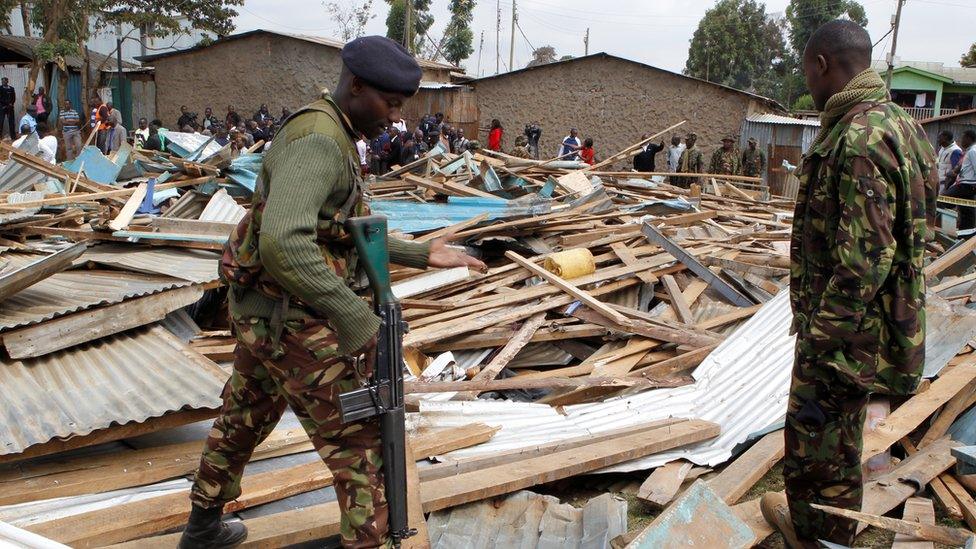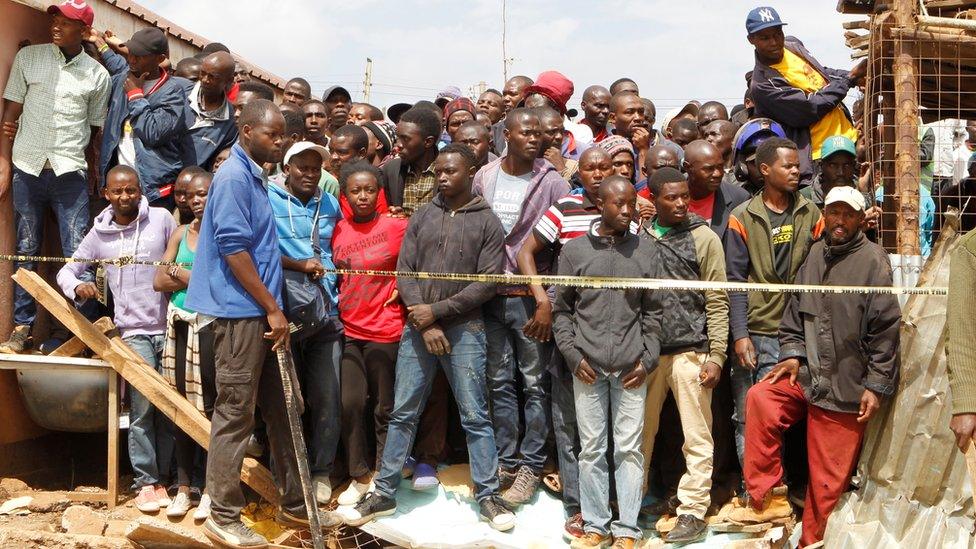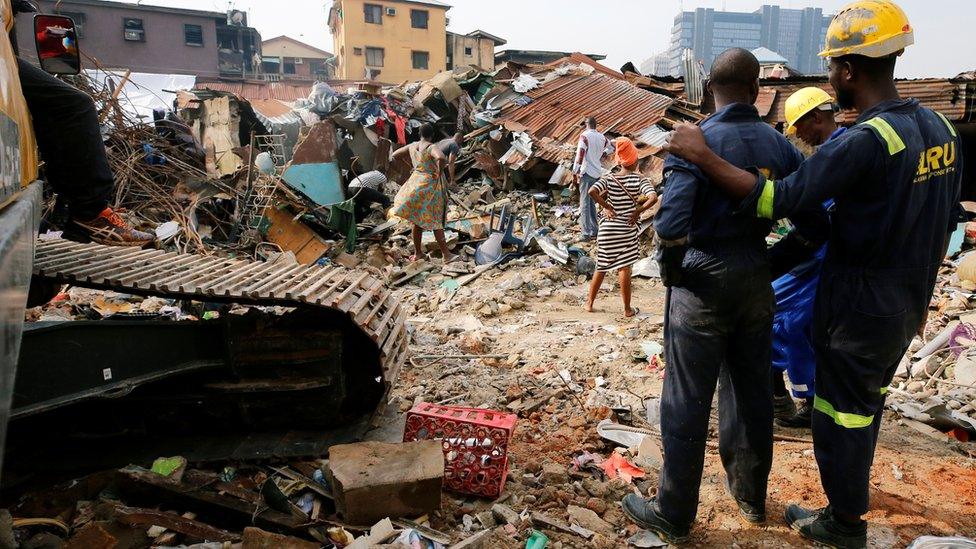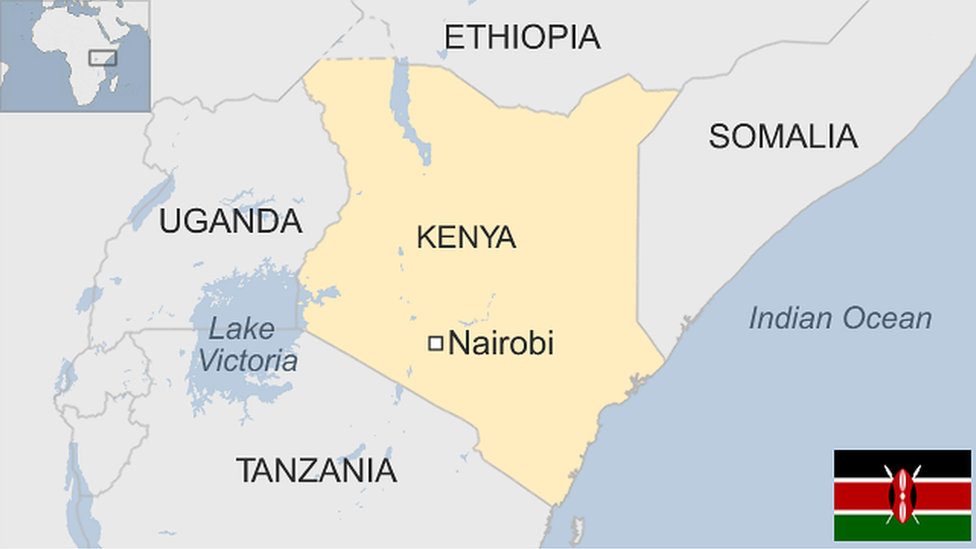Kenya school collapse: Seven dead and dozens injured in Nairobi
- Published
Watch as rescuers rush to clear debris from the site
At least seven children have died after a classroom collapsed at a primary school in the Kenyan capital Nairobi, officials say.
The wooden structure at Precious Talent Top School collapsed just minutes after the start of the school day on Monday.
Dozens of people were injured and have been taken to hospital in the city. Emergency services are at the scene.
Rescuers have reportedly had difficulty getting to the school because of the large crowds that have gathered nearby.
"We have regrettably lost seven lives to this morning's incident," Education Secretary George Magoha told reporters outside the school in Dagoretti. He added that 64 people had been injured.
The school's director, Moses Ndirangu, blamed the collapse on the construction of a nearby sewer, which he said may have weakened the foundations of the building.

Residents gathered around the site as rescuers searched through the rubble
The collapse happened shortly before 07:00 local time (04:00 GMT) and dozens of children were rushed away from the scene.
The Kenyan Red Cross transferred some children to the Kenyatta National Hospital. Two of the injured were reported to be in a critical condition.
The first floor of the building collapsed and trapped the children below, local politician John Kiarie told the NTV Kenya television channel.
Angry locals complained about the slow emergency response. The government said it had opened an investigation into the cause of the accident.

People watch as rescue teams and police officers search the debris
Images on social media showed hundreds of residents gathered around the site as rescuers search through the rubble. Books, desks and chairs could be seen amongst the debris.
"I had just dropped my son to school and heard screams on my way back," Margaret Muthoni, whose four-year-old son was injured, told the AFP news agency.
"I am just lucky my son survived," she said..


The private school is located near Nairobi's well-known Ngong Racecourse and more than 800 pupils are thought to attend.
The BBC's Ashley Lime in Nairobi says that many Kenyans prefer private schools are preferred to state schools, considering them superior.
Free primary school education, introduced by the Kenyan government in 2003, has led to overcrowding.
Our reporter says it is common to see three pupils sharing a single desk in public schools, while morale among teachers is often poor.
As a result, the number of private schools has increased markedly, from 7,742 in 2014 to 16,594 this year, official figures show.

'A disaster waiting to happen'
Ferdinand Omondi, BBC News, Nairobi
Blood. Tears. Body bags. Lots of wailing.
This was the aftermath of a school tragedy that left at least seven dead. A first aider at the scene described a very disheartening picture; bodies crushed beneath a heap of concrete, wood and iron sheets, with crying children waiting to be rescued from the dust-coated rubble.
And then the questions. Was this school meant to be here in the first place? Professor Alfred Omenya, a Nairobi-based architect, said it was not. He described the building as a "disaster waiting to happen" - weak foundation, weaker walls, and a concrete slab placed on top to add an extra storey.
Education minister George Magoha said he was sorry for what happened and promised action after investigations were completed. He also said he took responsibility for what had happened.
But many Kenyans do not want to see someone simply take responsibility; they want resignations, arrests and criminal charges.
- Published15 March 2019

- Published4 July 2023
